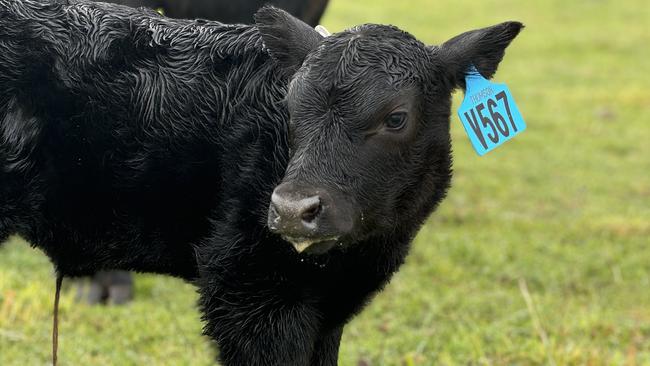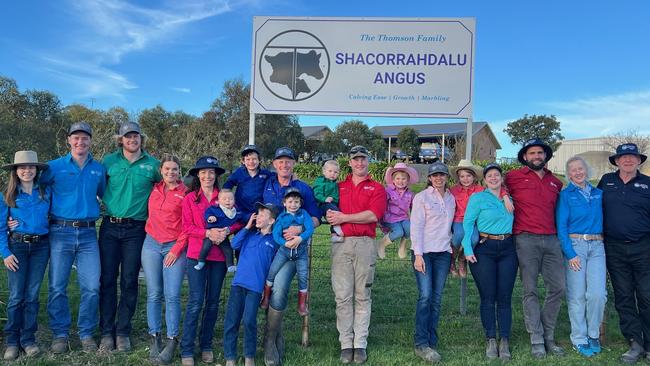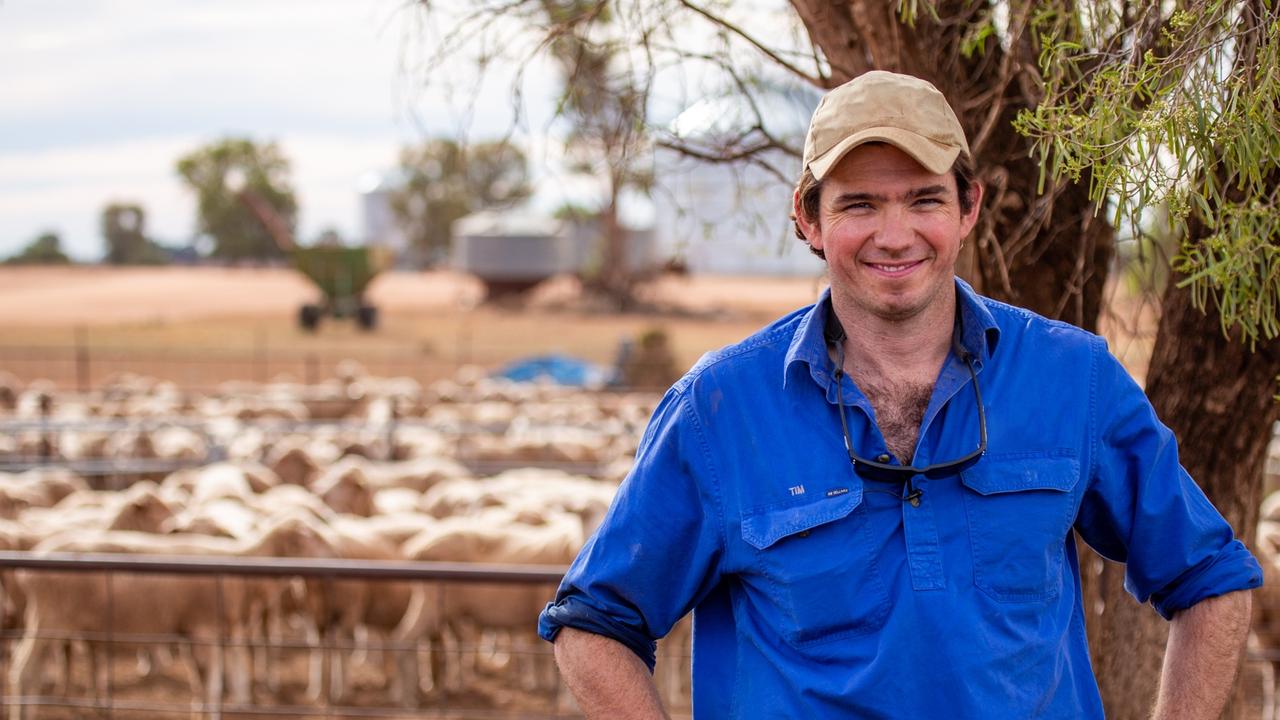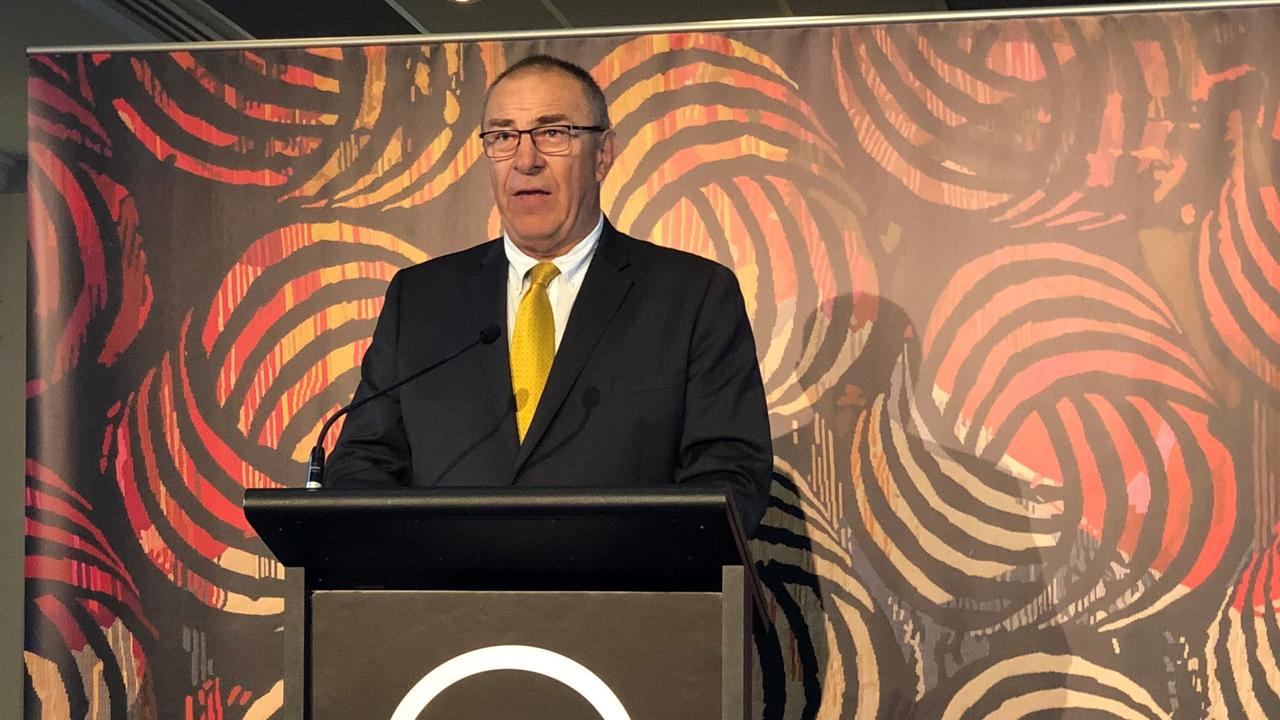These young guns are using their professional skills to grow family business
Finding roles for five sibling sin a relatively young farming operation hasn’t been easy, but this Angus stud is leading the way.

A family of off-farm professionals from NSW is pushing for rapid, but sustainable, genetic gain in their young stud, and data proves they are making great progress.
The Thomson family’s set up is unique.
Across three properties, five siblings, Shane, Corey, Rachel, Damien and Lucas are all involved in the family’s agricultural interests, as well as parents Peter and Liz Thomson.
But all seven also have off-farm careers and they share the load of managing commercial and stud cattle across three properties.
The Angus stud was rebranded from Shacorrahdalu to Thomsons Angus in December.
Selling up to 80 bulls a year, the young stud’s bulls have averaged from $8000 to $12,000 in recent seasons, but it is their rankings on Breedplan and Angus indices that are impressing the industry.
And numbers is something the family is well across.
There are four accountants in the Thomson clan – both Peter and Liz, Corey and Lucas, one architect being Rachel, as well as a vet; Shane, while Damien is the Genetics Australia beef manager.
The family first bought a farm in 1998, running commercial Angus cattle, and in 2009 purchased seven foundational stud cows.
“It is a bit of a complex set up, but recently we put the business into a company structure, and defined roles for everyone,” Shane said.
“It can be a double-edged sword, but we do all really get along and the new structure has made things more straight forward,” he said.
“Everyone has been given roles that align with where their passions are, and they have got ownership of that area.”
The Thomsons are part way through succession planning, and Damien and Shane said thankfully their parents had been “progressive in that regard”.
The family has 1000ha across three properties at Bookham, Holbrook and Murrumbateman in NSW.
They run 650 breeders across these farms with Holbrook home to autumn calving stud cows; the home property Bookham hosting spring calving stud and commercial recipient cows and is where all young cattle are grown out, while the third place is for all commercial cattle.
This arrangement came about organically, as further property was purchased to accommodate where family members’ off-farm careers were based.
The stud has now been going for 16 years and around 80 bulls are sold each year. Last season 56 were sold at the stud’s fourth annual spring on-property invitational helmsman auction, with the balance sold on contracts in the paddock.
“We used to sell everything in the paddock but we didn’t feel that was that equitable, so we moved to an on-farm helmsman auction, without an agent, as we already had our client base,” Shane said.
“We don’t market our bulls, we have grown by word-of-mouth and not having an agent in the middle has allowed us to have a direct relationship with our clients, which we really enjoy.”
To gain access to the online selling platform AuctionsPlus, however, Shane said they may need to involve an agency in future to conduct assessments.
“We are expanding year-on-year and have used embryo transfer programs extensively,” he said.
“We hope to get 80-100 bulls out of our 250 stud cattle this year.”
Once the goal of producing 100 bulls is achieved, the Thomsons intend to reassess their approach to the stud, and ensure their operations are “working as a commercialised business, at scale”.
Damien said while they still experienced pre-sale nerves, like all seedstock producers, each year demand for their bulls exceeded supply.
While some clients produce weaner calves, most run feeder systems; self-replacing Angus herds producing 380-500kg feeders by their second spring, and had a sharp focus on performance data.
“They put a lot of pressure on us on our EBVs, which is healthy, we are big advocates for BreedPlan and AGBU,” Shane said.
“The impact EBVs and genomics have had on our stud has been massive.”
All Thomsons Angus calves are genomically tested.
To help fast track the genetic merit of the females in their program, the Thomsons use not only artificial insemination technologies but embryo transfer.
“We genomic test our whole cow herd to identify elite cows which we then flush,” Damien said.
Cows with lower genetic merit, perhaps the bottom 30 per cent, are then used as recipient cows, with the top 5-10 per cent identified as donors and used to produce embryos.
The mid-tier group of cows are joined using AI.
“We have been very open to learning what others do and have had good advice from Breedplan and AGBU so that we can use the technology to the best of our ability; those services are under used in the industry and offer so much benefit,” Damien said.
He has also developed his own computer program to set minimum thresholds for their cattle and to assist with matings.
Damien developed the program, run through Excel, which generates mating predictions to optimise each mating, pairing the right combination of traits, using the top eight to 10 sires. Custom indexes have also been developed.
Shane said it was important to point out to clients that the structural traits that were heritable and could be objectively measured – such as frame size, claw set, docility – were included in this group of traits.
“Breedplan can also do this, but Damien wanted to understand and see how it was working within our herd,” Shane said.
The female herd has been influenced by The Grange and Ardrossan, originally, with influences from Rennylea, Wattletop, Anvil and Kilburnie in recent years.
Purchases of selected, high genetic merit females are made and those animals are flushed for embryo transfer programs.
“Three years ago we audited our herd and identified that while we had excellent growth, we were lacking in intramuscular fat,” he said.
This led to the decision to buy three Rennylea females.
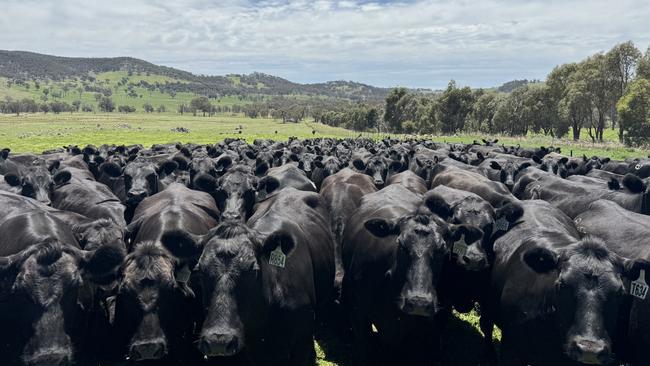
Thomsons have also entered five bulls in the Angus Sire Benchmarking program, which they said has provided an invaluable source of actual carcass data to improve the accuracy of their genomic data.
And, contributed semen to a multi-breed program that is investigating the emissions and feed efficiency of pasture-fed cattle.
“There is a lot of interest in feed efficiency and people assume genetics perform the same in a feedlot as in a pasture system, but we would like to see what the data says.”
Other research had shown body type and appetite also played a role in their equation.
The Thomsons’ approach to their enterprise is to run all the cattle under high stocking rate pressure, to test the genetics in a real-world environment.
Shane and Damien said they also had a sharp focus on breeding for correct structure and docility traits.
Overall, the goal was to “nail four key traits – calving ease (birth weight), growth at 400 days, and to have a moderate mature cow weight and good IMF”, Damien said.
“We are averaging in the top 3 per cent of Angus breed indexes for the whole calf drop and the whole group is averaging in the top 20 per cent or better for the four key traits.”
Home-bred sires have played an enormous role in the stud’s progress in the past three years, something the brothers are very proud of.
“When you look at the highest indexing sires on TACE, our bull APB22T385 is ranked number two and our bull APB21S350 is ranked 14,” Damien said.
“We have also sourced two sires ourselves that have made a huge impact.
“HPCA Zephyr is ranked sixth, which we imported from the US and Wrigley Supreme S2 is ranked eleventh, which we bought in Australia.
“These four sires makeup 157 calves out of 215 in our 2024 drop.”
On this year’s outlook, the brothers are hopeful their efforts to produce superior genetics for higher profitability on-farm will be rewarded and are watching with interest MLA’s value based marketing work.
“We believe the value of these superior genetics should also be reflected in the market and throughout the supply chain,” Damien said.
